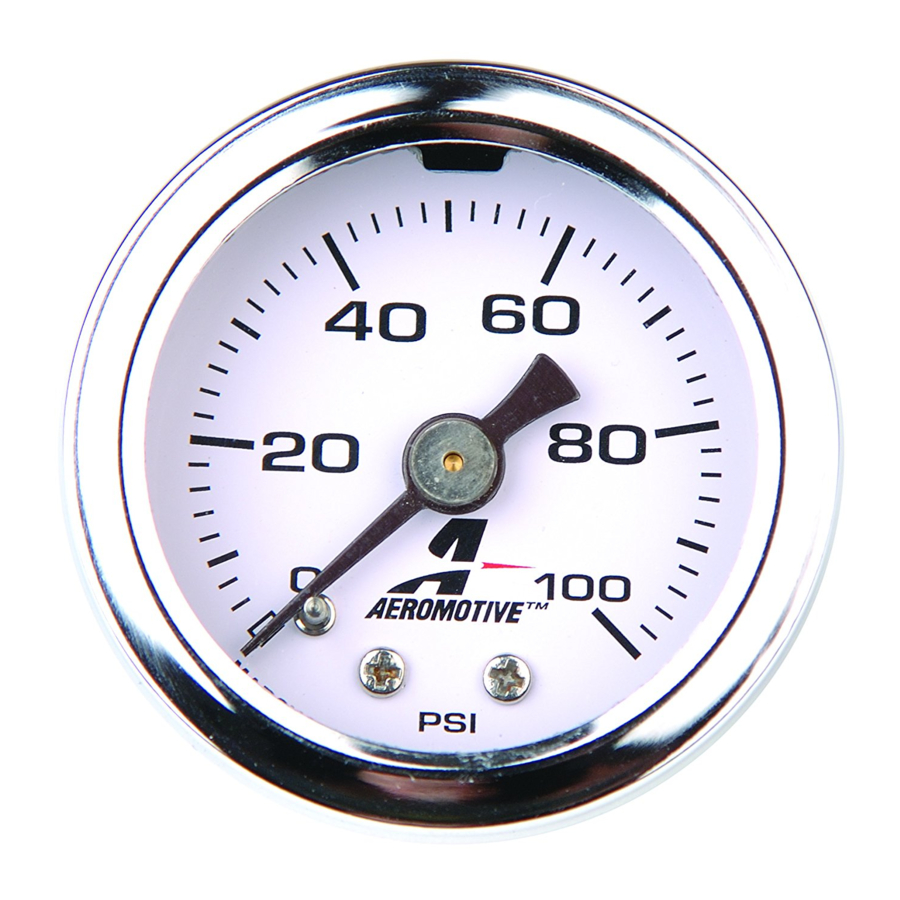Advertisement

Preliminary Steps
- Read instructions thoroughly. Please consult a qualified mechanic if you have not had training in the proper installation of instruments.
- Determine ideal mounting location. Consult your vehicle's repair manual to locate:
- Fuel Pressure Port
- Oil Pressure Port
- Any other Pressure port
Some late model vehicles use electronic sensors in their pressure and temperature senders for engine control functions. Before removing the original senders, we recommend that you contact your Auto Dealer to be sure no critical functions will be disrupted. With pressure gauges, it is beneficial to add a T-fitting to install your new gauge and to keep the warning light operational. This allows you to monitor the pressure and still have a warning light to indicate emergency conditions.
INSTALLATION

- Locate pressure port. This gauge is designed for 1/8" NPT. In some cases an adapter may be necessary.
- Install T-fitting if needed to share test port with additional gauge(s).
- Ensure the regulator is mounted with the gauge face vertical, at the right angles to the ground, with the Vent Valve at the top.
- Apply Teflon sealing compound to insure a leak-free connection.
- Install gauge into pressure port, being careful not to over tighten.
- After installation, start engine and check all connections for leaks.
OPERATION
Your gauge may be equipped with an external vent valve for the purpose of venting the gauge. Changes in temperature and environmental pressure can affect how a liquid filled gauge reports pressure. Your new Auto Meter liquid filled gauge may be equipped with a unique vent valve that allows gauge pressure to be equalized to atmosphere, as needed, insuring accurate pressure readings regardless of operating conditions.
To vent the gauge case push the black band back covering the vent valve head and gently lift it up slightly, DO NOT REMOVE THE VALVE. Once the valve is raised, gauge case pressure is again equalized to atmosphere, and reported pressure will be accurate. Please push the stem back down and replace the black retaining band immediately after equalizing pressure to reseal the gauge and help retain the valve during vehicle operation.
NOTE: The gauge must be mounted with the gauge face vertically, (or as close to 90° to the ground as possible) with the vent on top. This is to prevent the gauge from leaking during venting.

NOTE: This liquid filled gauge is not intended to be 100% full of liquid. When held vertical, the level can appear to be between 3/4 and 7/8 full.
SERVICE
For service send your product to Auto Meter in a well packed shipping carton. Please include a note explaining what the problem is along with your phone number. If you are sending product back for Warranty adjustment, you must include a copy (or original) of your sales receipt from the place of purchase.
Documents / ResourcesDownload manual
Here you can download full pdf version of manual, it may contain additional safety instructions, warranty information, FCC rules, etc.
Advertisement



Need help?
Do you have a question about the 15633 and is the answer not in the manual?
Questions and answers